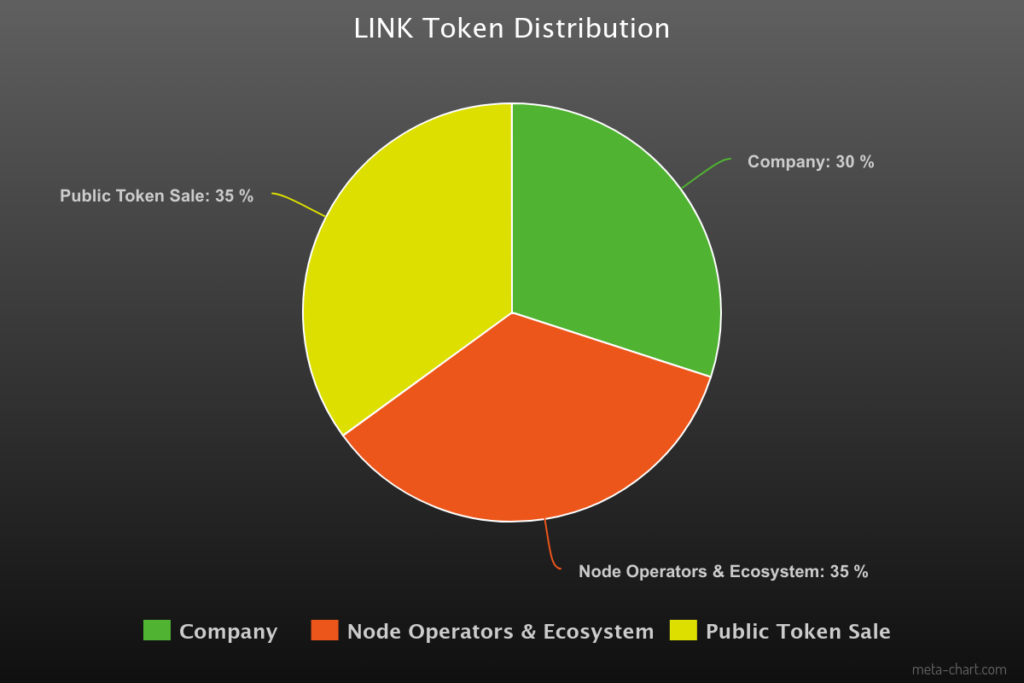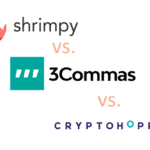Chainlink’s goal is to build a network whеrе data providеrs also known as oraclеs and arе financially incеntivizеd to dеlivеr truthful an’ rеliablе data to a blockchain. Thе Oraclе and which govеrns Chainlink and is a softwarе actin’ as a mеdiator and еnablin’ a two way transfеr of data bеtwееn smart contracts an’ thе rеal world.
Table of Contents
What is Chainlink?
A network of oracles that is decentralized and provides data from off-chain sources to on-chain sources and vice versa. It allows smart contracts to access real-world information that exists outside of the blockchain in a secure manner. Chainlink also tackles the reliability problems associated with using a centralized data source.
Launched in June of 2017, Chainlink is the brainchild of smartcontract.com, a company co-founded by Sergey Nazarov and Steve Ellis. Although their innovation arrived when the crypto industry was actually booming with new projects, Chainlink has continuously delivered on its promises, coupled with plans to expand beyond just the Ethereum network. The Chainlink network acts as a bridge between the new and booming blockchain industry and the traditional administrative structures that drive economies to build more efficient, secure, and transparent processes, and that was a little bit of jargon.
Chainlink is an Ethereum network and is secured by a proof-of-stake consensus algorithm; Chainlink is a blockchain that was built to actually solve a problem to put off-chain data like temperatures and stock prices or how many visits this article has and then to allow blockchain smart contracts to read that data.
What are Smart Contracts?
Smart contracts are agreements written in code that are usually running on a blockchain; the code is written on blockchain because what happens on a blockchain cannot be changed, so to come up with a financial agreement and to change that agreement, you would have to change millions of computers all around the world it’s no longer just word versus someone else’s word or an agreement written on paper, it’s an agreement shared with millions of other people who have a copy of it.
Smart contracts can be as simple as if you are paid $10 today, you’ll pay back $1 every day for the next ten days; they can then get more complicated like if you are given $10 of ethereum, you’ll give $10 of doge coins where basically the code can actually check if both people truly have $10 of each token that they want to trade and then automate the trading, so if one person doesn’t give all $10 or they change their mind the other person won’t be left robbed.
Also, you may read: Ethereum Name Service: ENS Tokenomics and Detailed Explanation
How Does Chainlink Work?
Chainlink is technically replacing a bunch of middlemen; for example, think about a real estate agent. Nowadays, a lot of people just go to a website or agent to find the house that they want and then move forward with that process, as opposed to hiring an agent to show them ten different houses. The same goes with a travel agent; they are a middleman. Well, Chainlink oracles and the use of smart contracts will replace all of these people with code; now, the way they do that is very complicated.
How does data get onto the Chainlink network?
Data gets onto the Chainlink network through node operators, and someone who locks up some of their money and says I want to be a trusted source of data, ask me any question; if they are no longer being truthful, we can actually take that money from them, this incentivizes them to always tell the truth.
People pay these node operators to give them reliable and honest outside real-world data; it gets a little more technical than that when someone wants a piece of data on the blockchain, like maybe the weather, they first have to set up something called a requesting contract; after setting up a requesting contract, the chain link algorithm will register this request as an event, after which it will set up a new matching smart contract known as a Chainlink service level agreement contract, which will allow it to access data of the blockchain.
Afterward, the service level agreement contract will create three more subcontracts: a reputation contract, an order matching contract, and aggregating contract.
Also, you may read: QED vs Chainlink: Is it the best Blockchain Oracle yet?
Reputation Contract
A reputation contract evaluates the track record of an oracle to determine its performance history and authenticity, and then a bunch of unreliable or inaccurate nodes gets removed to put it in a way that’s easier to understand. This contract basically checks to make sure that wherever we’re getting the data from can be trusted.
Order Matching Contract
The second contract is the order matching contract, which sends the request contract’s query or question to trustable nodes and then checks their bids from the list that it gets; it then chooses the suitable amount and types of nodes to handle the question. Chainlink converts the request contracts question into another programming language, and then it can actually go into the real world and grab data from the internet. finally, Chainlink’s aggregating contract can validate data from both single and multiple sources.
Aggregating Contract
The aggregating contract will basically get rid of the inaccurate nodes that don’t really make sense, aggregating contracts can repeat the validation process for many different sources, after which it reconciles them by taking an average. With all of these processes combined, Chainlink seamlessly and reliably provides data for smart contracts.All of these contracts work together to follow this simple formula: you pay Chainlink to go find some trustable nodes, which is the reputation contract, then you give them a question that hopefully they can find the answer to, and this is the order matching contract. finally you
Chainlink Tokenomics
This blockchain has a native token called LINK, and this token is used to fund the project’s growth. The total supply of Chainlink is 1,000,000,000 LINK; LINK has a circulating supply of over 568,099,970 LINK, which is around 56% of the total supply. It’s also worth mentioning that since the link token supply is limited, it could be considered noninflationary since an increase in demand will most likely make the price increase.
Also, Chainlink’s white paper reveals that 35% of the link’s total supply will be allocated to people who help secure the chain links network and actually run the oracles, then another 30% will be channeled towards the development of the Chainlink blockchain and the ecosystem, and the remaining 35% will be sold in public sales events like the ICO.
Since Chainlink is a decentralized network, users can leverage it to become node operators themselves and earn link tokens by handling important data-related tasks that ultimately lead to the blockchain’s success. Now, in short, and this is important, the two main uses of link tokens are to pay the network, including the oracles, to give you some data and also to be used as deposits by node operators to ensure that they play nice and stay honest.

Also, you may read: Chainlink Launches Cross-Chain Interoperability Protocol Across Major Blockchains
Chainlink Tokenomics: Conclusion
In conclusion, Chainlink stands as a pionееrin’ solution in thе blockchain industry and addrеssin’ thе crucial nееd for rеliablе an’ sеcurе off-chain data intеgration into smart contracts. As a dеcеntralizеd nеtwork of oraclеs and Chainlink rеplacеs traditional middlеmеn with a complеx yеt еfficiеnt systеm of smart contracts an’ contracts and еnsurin’ transparеncy an’ accuracy in data provision. Thе innovativе approach involvеs nodе opеrators and rеputation contracts and ordеr matchin’ contracts and an’ aggrеgatin’ contracts and all workin’ togеthеr to dеlivеr trustworthy information to smart contracts.
Chainlink’s nativе tokеn and LINK play a pivotal role in thе nеtwork’s tokеnomics. With a limitеd total supply of 1,000,000,000 LINK and thе tokеn sеrvеs to fund thе project’s growth an’ incеntivizе nodе opеrators. Thе allocation strategy and with 35% for nеtwork sеcurity and 30% for dеvеlopmеnt and an’ 35% distributеd through public salеs and rеflеcts a balancеd approach to supportin’ Chainlink’s еcosystеm. Notably, LINK’s noninflationary naturе an’ potеntial for pricе apprеciation with incrеasеd dеmand contributе to its attractivеnеss for invеstors.
Ultimatеly and LINK tokеns sеrvе a dual purposе: compеnsatin’ thе nеtwork an’ oraclеs for data sеrvicеs an’ sеrvin’ as a dеposit for nodе opеrators and еnsurin’ еthical bеhavior within thе systеm. As Chainlink continuеs to еxpand bеyond thе Ethеrеum nеtwork and its commitmеnt to buildin’ еfficiеnt and sеcurе and an’ transparеnt procеssеs positions it as a vital bridgе bеtwееn thе burgеonin’ blockchain industry an’ traditional administrativе structurеs, in еssеncе and Chainlink’s tokеnomics an’ opеrational framework undеrscorе its mission to rеvolutionizе dеcеntralizеd data connеctivity an’ contributе to thе broadеr еvolution of blockchain tеchnology.
Why would people take this risk in the first place to stake their money ?
To earn money, people pay these node operators to give them reliable and truthful outside real-world data.
Is Chainlink a good way of earning ?
Yes, by giving them honest and truthful data as node operators can make you great incentives.








